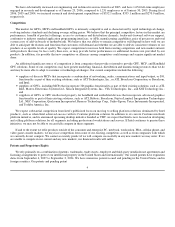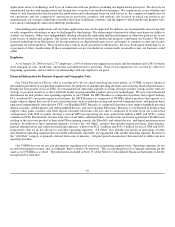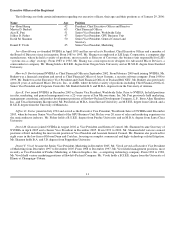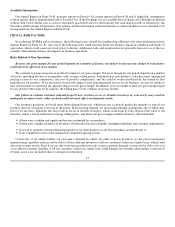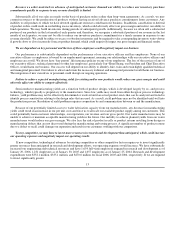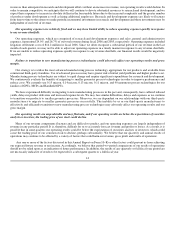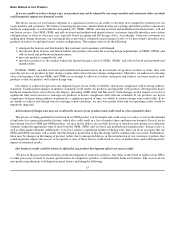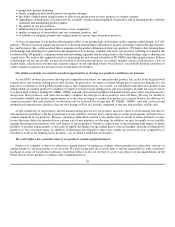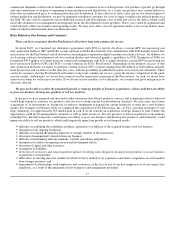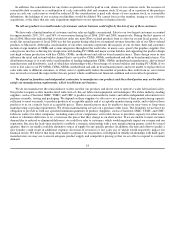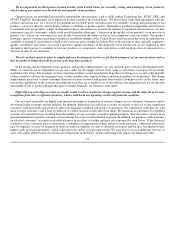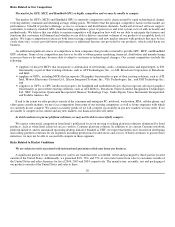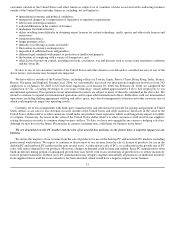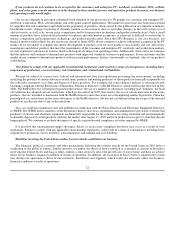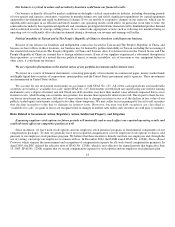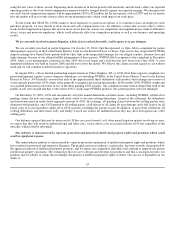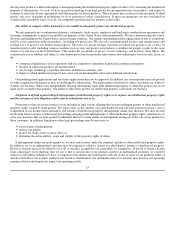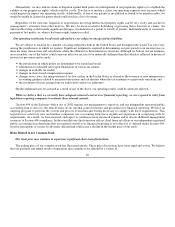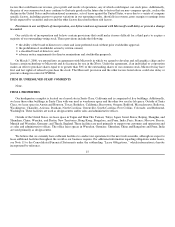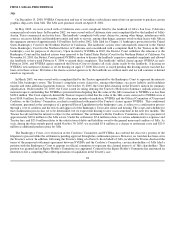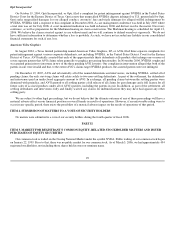NVIDIA 2006 Annual Report Download - page 25
Download and view the complete annual report
Please find page 25 of the 2006 NVIDIA annual report below. You can navigate through the pages in the report by either clicking on the pages listed below, or by using the keyword search tool below to find specific information within the annual report.
We are dependent on third parties located outside of the United States for assembly, testing and packaging of our products,
which reduces our control over the delivery and quantity of our products.
Our processors are assembled and tested by independent subcontractors, such as ASE, Amkor Technology Inc., KYEC, SPIL, and
STATS ChipPAC Incorporated, all of which are located outside of the United States. We do not have long−term agreements with any
of these subcontractors. As a result of our dependence on third−party subcontractors for assembly, testing and packaging of our
products, we do not directly control product delivery schedules or product quality. Demand for qualified independent subcontractors
to assemble and test products is high. If demand for these subcontractors exceeds the number of qualified subcontractors, we may
experience capacity constraints, which could result in product shortages, a decrease in the quality of our products or an increase in
product cost. Any of our subcontractors may decide to prioritize the orders of one of our competitors over our orders. Any product
shortages, quality assurance problems or political instability outside of the United States could increase the costs of manufacture,
assembly or testing of our products, which could cause our gross margin to decline. Due to the amount of time typically required to
qualify assemblers and testers, we could experience significant delays in the shipment of our products if we are required to find
alternative third parties to assemble or test our products or components. Any such delays could result in a loss of reputation or a
decrease in sales to our customers.
We rely on third−party vendors to supply software development tools to us for the development of our new products and we
may be unable to obtain the tools necessary to develop these products.
In the design and development of new products and product enhancements, we rely on third−party software development tools.
While we currently are not dependent on any one vendor for the supply of these tools, some or all of these tools may not be readily
available in the future. For example, we have experienced delays in the introduction of products in the past as a result of the inability
of then available software development tools to fully simulate the complex features and functionalities of our products. The design
requirements necessary to meet consumer demands for more features and greater functionality from processors in the future may
exceed the capabilities of the software development tools that are available to us. If the software development tools we use become
unavailable or fail to produce designs that meet consumer demands, our business could suffer.
Difficulties in collecting accounts receivable could result in significant charges against income and the deferral of revenue
recognition from sales to affected customers, which could harm our operating results and financial condition.
Our accounts receivable are highly concentrated and make us vulnerable to adverse changes in our customers' businesses and to
downturns in the economy and the industry. In addition, difficulties in collecting accounts receivable or the loss of any significant
customer could materially and adversely affect our financial condition and results of operations. We continue to work directly with
more foreign customers and it may be difficult to collect accounts receivable from them. We maintain an allowance for doubtful
accounts for estimated losses resulting from the inability of our customers to make required payments. This allowance consists of an
amount identified for specific customers and an amount based on overall estimated exposure. In addition, we purchase credit insurance
on selected customers' accounts receivable balances in an effort to further mitigate our exposure for such losses. If the financial
condition of our customers were to deteriorate, resulting in an impairment of their ability to make payments, additional allowances
may be required, we may be required to defer revenue recognition on sales to affected customers and we may be required to pay
higher credit insurance premiums, which could adversely affect our operating results. We may have to record additional reserves or
write−offs and/or defer revenue on certain sales transactions in the future, which could negatively impact our financial results.
19


